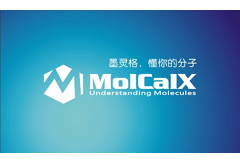摘要:2020年Cresset用户会(UGM2020)定于2020年6月18-19日在英国剑桥召开。除了本领域顶尖研究人员的邀请报告之外,Cresset的科学家也将展示最新技术以及即将推出的应用,以帮助您尽可能高效地设计最佳分子。无论您是Cresset的新手、老用户、或者只是想了解我们提供的解决方案,我很期待在会议上见到您。

来自Cresset的邀请
Cresset团队非常热烈地欢迎您参加2020年Cresset用户会议,该会议原定在英国剑桥召开,由于受到疫情影响,改为线上会议。Cresset的科学家们将展示最新技术以及即将推出的应用,以帮助您尽可能高效地设计最佳分子。无论您是Cresset的新手、老用户、或者只是想了解我们提供的解决方案,我都很期待在会议上见到您。
适合人群
Computational chemist • Medicinal chemist • Synthetic chemist • Flavor chemist • Fragrance chemist • Head of discovery • Head of modeling and simulation • Head of R&D • Research Scientist • CSO
时间
2020年6月18日(英国时间)12:00-14:45
2020年6月18日(北京时间)19:00-21:45
地点
在线会议
会议安排
| 时间 | 标题 | 报告人 |
|---|---|---|
| 12:00 | Welcome | Rob Scoffin, Chairman and CEO |
| 12:10 | Accelerating your DMTA Workflow Using Torx™ a New Platform for Small Molecule Discovery Chemistry | Tim Cheeseright, CEO, Torx Software |
| 12:35 | What’s in the Lab? | Mark Mackey, CSO |
| 13:00 | Free Energy Perturbations (FEP) in Flare™ | Stuart Firth-Clark, Senior Application Scientist |
| 13:25 | What’s New in Flare™ and Spark™ | Giovanna Tedesco, Head of Products |
| 13:50 | Future Developments for Forge™, Blaze™ and PickR™ | Giovanna Tedesco, Head of Product Management |
| 14:10 | Open Force Field Consortium | Mark Mackey, CSO |
| 14:25 | Discussion and Closing Remarks | Rob Scoffin, Chairman and CEO |
| 14:45 | Close |
注册方法
在线注册:点击这里
注册之后,将在会议临近开始前在线登录。
费用
会议费用:无
会议摘要
1. Accelerating your DMTA Workflow Using Torx™ a New Platform for Small Molecule Discovery Chemistry
Speaker:Tim Cheeseright, CEO, Torx Software
Coordinating new molecule chemistry through the DMTA cycle has never been more important or more challenging. Torx is designed to help. Individual modules provide specialized interfaces for molecule design, synthesis management, biological test requests, and data analysis, that help take control of the small molecule life cycle.
In this presentation we will guide you through the Torx modules, showing the unique features that enable you to accelerate your drug discovery programs through improved information dissemination, team work, and knowledge capture.
2. What’s in the Lab?
Speaker:Mark Mackey, CSO
We present a peek at the ongoing research in the Cresset labs, including improvements to FEP, custom parameter generation, AI generation of atomic charges and more.
3. Free Energy Perturbations (FEP) in Flare™
Speaker: Stuart Firth-Clark, Senior Application Scientist
We present an overview of FEP in Flare, including the automated generation of different types of perturbation networks (two-ways, single-way and star-graph), how to achieve the best predictions by making use of available experimental activity data, and will illustrate the graphical tools for the analysis of FEP results.
Finally I will show you how to seamlessly connect Flare to remote cloud computing resources.
4. What’s New in Flare™ and Spark™
Speaker: Giovanna Tedesco, Head of Product Management
I will introduce the new science, features and improvements in the recent releases of Flare and Spark. For Flare, these include Free Energy Calculation, molecular dynamics, new and improved force fields, enhancements to docking workflows, ligand-based alignment, interaction with Blaze, and many other new features and improvements. For Spark, the ability to score results via docking, new databases, new features and improvements to the GUI.
5. Future Developments for Forge™, Blaze™ and PickR™
Speaker: Giovanna Tedesco, Head of Product Management
Join me in this overview of the Cresset vision for the future developments of Forge, Blaze and PickR. The seamless integration of Forge and PickR into Flare will create a comprehensive application where structure- and ligand-based methods can be applied in synergy to tackle drug discovery problems.
Plans for Blaze involve its transformation into a platform for virtual screening, complementing the original Blaze algorithm with high-throughput docking, shape-based methods, and 2D fingerprints searches in a modern and completely redesigned GUI.
6. Open Force Field Consortium
Speaker:Mark Mackey, CSO
In running simulations of protein-ligand systems it is critical that a good model of the ligand is used. Ligand force fields must deal with a much higher diversity of ring systems and functional groups than protein force fields, which often leads to an explosion in the number of atom types (and concomitant parameters) that are required. The new SMIRNOFF approach circumvents this problem by applying force field parameters directly using pattern matching with SMARTS patterns. As a result, the force field definition can say “this torsion parameter applies to this chemical environment” with a high degree of specificity, rather than having to rely on a fixed set of atom typing rules. A new force field based on this concept is being developed by a group of academics and pharmaceutical companies, the Open Force Field Consortium. As members of the consortium, Cresset is pleased to present the release of the first version of the Open Force Field (codenamed ‘Parsley’) in Flare, and to present initial results showing its use in free energy perturbation calculations.



